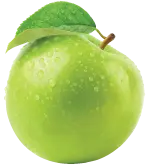
Ingredient and Product Thawing and Tempering
Product and ingredient thawing and tempering is an important part of maintaining food safety and quality.
To thaw an ingredient or product for use means to bring the consistency of a frozen solid product to a liquid, or un-frozen state.
To temper products is to bring the temperature of a product from a certain temperature to a usable temperature, for example bringing a frozen puree to a temperature that it can be used successfully in a blended product.
The goal for tempering and thawing is to maintain temperatures and conditions that preserve food safety as well as food quality.
In low acid foods, foods with a pH of 4.6 and above, the identified hazard is the germination, growth, and the toxic formation by Clostridium botulinum (C. botulinum) in anaerobic conditions. Anaerobic conditions can occur in ingredients and products unintentionally through product and packaging densities. C. botulinum toxin can cause serious illness or death if consumed. Risk of C. botulinum germination, growth, and toxin formation are not a concern in high acid foods, foods with a pH of 4.59 and below, because the acid controls the organism. Current regulatory guidelines for the Low Acid Hazard Analysis and Critical Control Point (HACCP) are used as a guideline for Tree Top, Inc. in ingredient and product thawing and tempering processes.
If processes for tempering and thawing are not administered correctly, food safety is compromised by encouraging growth of pathogenic microorganisms and food quality is compromised by encouraging spoilage microbial growth. Microbial growth may also affect the product sensory aspects further compromising food quality.
Monitoring of the temperatures and the conditions
During the thawing and tempering process, the conditions and temperatures must be monitored to ensure the safety and quality of the product or ingredient. All thawing and tempering activities should be undertaken in equipment and areas for the purpose of thawing and tempering. Equipment for water thawing should be continuous flow to ensure the water exchange rate and temperature does not contribute to product deterioration of contamination. Product temperatures should be monitored by use of a calibrated thermometer, 2-4 inches from the inside edge of the container and approximately 2-4 inches deep to obtain the higher temperature than what is found at the core.
Products and ingredients with higher Brix content will thaw and temper faster than those with lower Brix content. Brix content must be considered when calculating and monitoring thawing and tempering times and temperatures. Air-flow or lack of air-flow around the containers of product or ingredients will impact the thawing and tempering times as well, e.g. containers stacked or packed closely together during the thawing and tempering process will temper significantly slower than those with air-flow. Production forecasting must consider the proper times for the thawing or tempering process to ensure the ingredient retains the safety and quality up to the time of use.
Low acid products and ingredients must be thawed or tempered in accordance to the following guidelines:
Table 1: Tempered Low Acid Product or Ingredient Temperature vs. Time of Allowable Exposure
| Low Acid Product or Ingredient Temperature | Time of Allowable Exposure |
| Between 42°F and 50°F | 48 Hours |
| Between 37.9°F and 41°F | 7 Days |
| Between 37.9°F and 26°F | 21 Days |
Once the time/temperatures limits are achieved from Table 1, the following are the guidelines for the exposure times and air temperatures:
Table 2: Low Acid Tempering Area Air Temperature vs. Time of Allowable Exposure
| Air Temperature of Low Acid Tempering area | Time of Allowable Exposure |
| 70°F and above | 90 Minutes |
| Between 50°F and 70°F | 8 Hours |
| Between 37°F and 50°F | 36 Hours |
| Between 26°F and 37°F | 14 Days |
Low acid products and ingredients are not to be thawed/tempered and refrozen due to the potential for microbial growth during the tempering process to affect food safety and quality. Low acid products that were originally received as aseptic and were frozen after opening are treated in the same manner as all other frozen low acid ingredients or products once frozen.
High acid products and ingredients may be thawed or tempered at ambient temperatures in a time/temperature-controlled manner which is adequately monitored. If the ambient temperature is higher than 50°F, conduct an evaluation on the time/temperature relationship within 36 hours to assess the risk of potential microbial growth in the product. High acid products and ingredients are discarded, or risk assessed for microbial contamination after 21 days from the time the product or ingredient has been thawed, as long as it was properly thawed and tempered, and was stored below 41°F. High acid products and ingredients may be thawed/tempered and refrozen only twice due to the potential for microbial growth during the tempering process to affect food safety and quality.
For both high and low acid products or ingredients, once a temperature is identified as being in a range that safety or quality may be compromised, lowering the temperature does not lower the amount of time before evaluation; e.g. An ingredient temperature reads 43°F, it is placed in the refrigerator and then reads 40°F, the ingredient is evaluated after 48 hours if it is still being used in the batch.
For more information about Tree Top’s fruit ingredients, explore our product pages. Our research and development team is ready to assist you in finding the perfect fruit solution for your next formulation. Call us at (800) 367-6571 ext. 1435
REFERENCES
- Fish and Seafood HACCP guide
- SQF Code, Edition 8




